The best post-apocalypse movies have richly drawn worlds that feel familiar and distant at the same time. While featuring catastrophes like extraterrestrial invasions or zombie-inducing viruses, these films are more terrifying when audiences can recognize parts of their own world in the fictional ones on screen.
A lot of good, old-fashioned movie magic goes into creating this effect, and these behind-the-scenes stories give light to all of the mundane, inspired, and impressive decisions that make the films on this list so memorable. Whether it involved creating a jostling train to nowhere, making animals appear human, or bringing nightmarish creatures to life, film production teams and actors collaborate in unexpected ways to capture these intense stories on screen.
1. The Birth Scene In ‘A Quiet Place’ Was So Intense That The Crew Couldn’t Look at Emily Blunt After Filming It
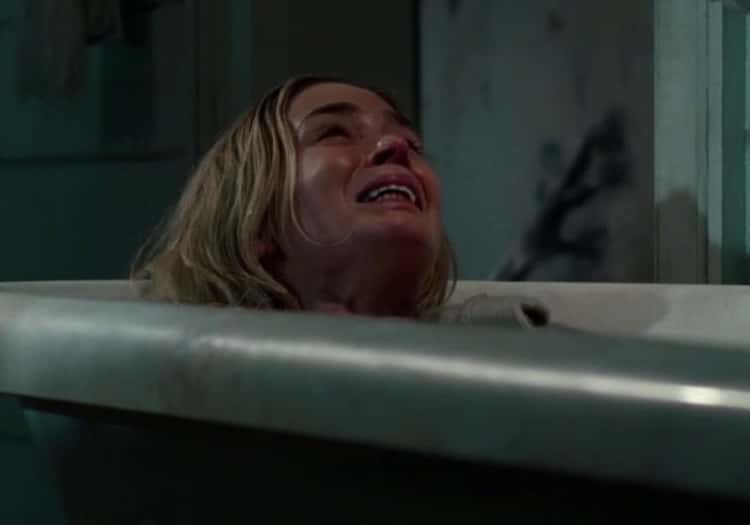
Unlike typical post-apocalypse movies with lots of explosions and machine guns, 2018’s A Quiet Place is, well, quiet. After an invasion of extraterrestrials with extra-sensitive hearing, a family of survivors must avoid making any noise to escape. The mother, Evelyn Abbott (Emily Blunt), is soon expecting another baby, so her husband Lee (John Krasinski) builds a sound-proof room in which she can safely give birth.
Blunt’s performance in that scene wowed the crew that filmed it. Director and co-star John Krasinki, who is also married to Blunt in real life, recounted the magnitude of Blunt’s acting:
She changes the air in the room. It’s not acting, it’s like you are witnessing a moment you shouldn’t be witnessing. I have a whole new respect for her. Only one guy would talk to her and he said, ‘I don’t think we were supposed to watch that. None of us should have been there.’
It takes a truly powerful actor to make the entire crew feel emotionally vulnerable after watching her performance, and Blunt’s efforts paid off marvelously for audiences in the finished film.
2. The Stunts In ‘Mad Max: Fury Road’ Are Real With Cars Built For Production
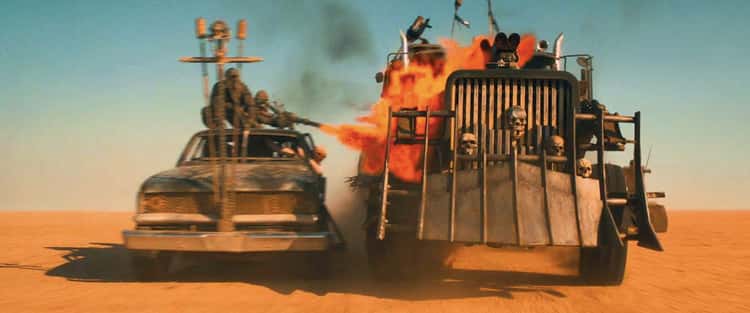
Mad Max: Fury Road won over audiences and critics alike with its high-octane action sequences. Filmmaker George Miller opted to make those sequences as realistic as possible by using “real vehicles, real locations, real movement and real stunts,” according to stunt coordinator Guy Norris.
Creating “real stunts” was no small feat. The production relied on the skill of 150 stunt people and custom-made, actual cars for the madcap chase sequences. In one of the most thrilling scenes, the production team actually crashed a rig. “We thought having all that CGI at the end of the movie with very little CGI would be cheating,” Miller reasoned.
The production team did live stunts for a variety of scenes. Norris recounted the coordination that went into one of his favorites:
The Polecats is probably my most favorite sequence. George always imagined that we would have to use CGI for safety’s sake, but it was my wish and dream that we could do that for real. A lot of effort went into training guys in Chinese pole work. Then a friend of mine who had worked for Cirque du Soleil took it a step further, heading up an eight-week training program. The real breakthrough was raising the pivot point of the pole, like with those old-fashioned desk sculptures were the duck puts his beak in the water.
3. ‘Rise of the Planet of the Apes’ Looks So Real Because Andy Serkis Actually Performed The Movements
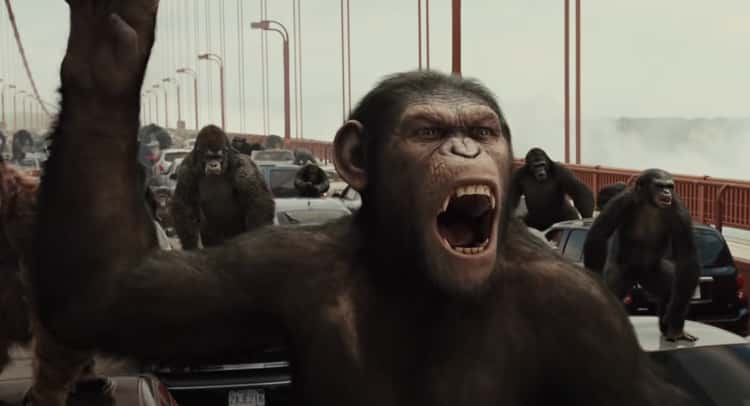
Watching Rise of the Planet of the Apes – the 2011 prequel to Planet of the Apes that explains how chimpanzees came to take over the world – it’s easy to assume that the chimpanzee characters were all animated by artists. In fact, they were based on actual performances. Instead of putting actors in sophisticated monkey suits or animating them from scratch, director Rupert Wyatt chose to use performance-capture technology. Actors like Andy Serkis, who brought the main chimpanzee Caesar to life, physically performed their roles, and technology translated their performance into animation.
Wyatt explained that this approach aimed to give the film a warmer, more realistic feel:
This is a story of real chimpanzees, real apes, unlike the original where you’re talking about humanoids. Prosthetic makeup [which was used in the original] could never replicate real primates. With performance capture, you have the opportunity for a human actor to get underneath the skin, literally and emotionally, of a chimp and actually become invisible.
4. John Krasinski Played The Monster In ‘A Quiet Place’
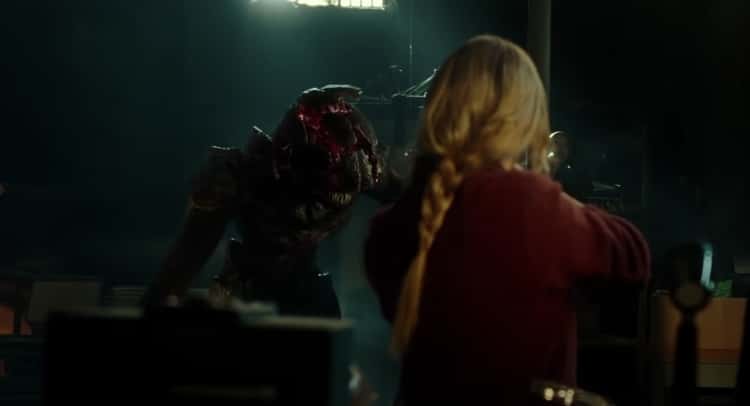
Actor John Krasinski is also talented behind the camera, demonstrating his directing talent in the smash hit A Quiet Place. The horror film follows a family forced to remain silent as they flee from vicious aliens with hyper-sensitive hearing.
Krasinski not only plays father Lee Abott, but also a second, less recognizable role: the alien. He revealed to Jimmy Kimmel that he performed the motion-capture element of the character:
The amazing people at [Industrial Light and Magic] asked, ‘So how does the creature move?’ and I said, ‘Well, this is how I think he’s gonna crawl.’ And they said, ‘Well, why don’t you throw on the suit?’ And I was like, ‘Totally!’ Then they took that picture and I thought I was auditioning for Lion King.
5. Bill Murray Agreed To Cameo In ‘Zombieland’ Thanks To Woody Harrelson – And A Kinkos
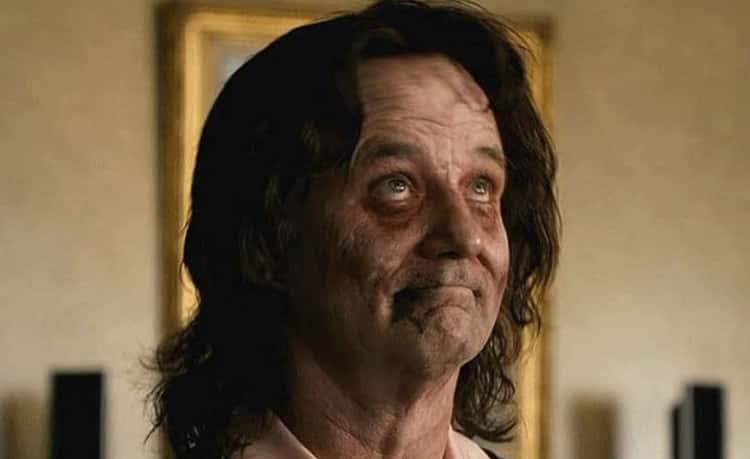
Apocalyptic films don’t have to be all doom and gloom. In Zombieland, the zombie apocalypse becomes the backdrop for a comedy about a group of survivors headed for a safe zone in Los Angeles. Amazingly, they run into a celebrity: Bill Murray, who makes an all-too-brief cameo in the film.
The filmmakers originally hadn’t planned on getting Murray to cameo in the film. Instead, they had considered other actors, including Mark Hamill. Co-writers Rhett Reese and Paul Wernick said they booked Murray only “a couple days away from shooting the scene” after star Woody Harrelson suggested him:
We wrote [a Bill Murray draft of the script] in about two hours, out on set in Atlanta. But the interesting thing about Bill is that he is very hard to get a hold of; he doesn’t even have an e-mail address. So we ended up sending the script to a FedEx Kinkos in New York! […] Bill literally walks down to this FedEx/Kinkos, picks up the script, and reads it.
After some edits to the script, Murray signed on and filmed his scene days later.
6. Streets Would Be Shut Down For Only Minutes To Capture A Scene In ’28 Days Later’
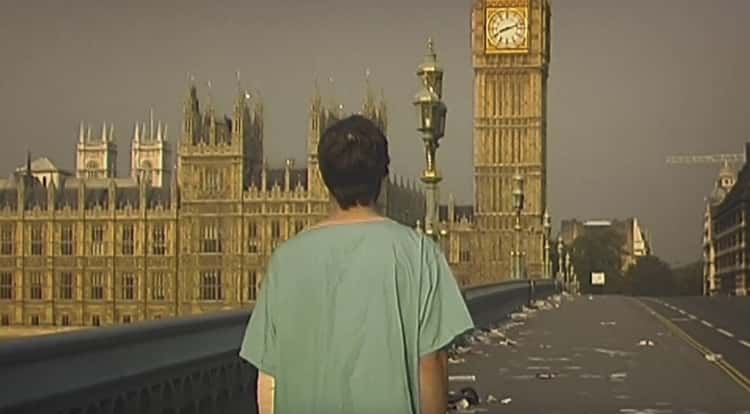
The Danny Boyle horror classic 28 Days Later depicts the aftermath of a virus has turned most of humanity into flesh-eating zombies. Boyle wanted to capture the uneasiness and unnatural quiet of a post-apocalyptic world.
To do that, the production had to film on location in London. In one of the film’s most chilling scenes, a character wakes up in a hospital, unaware of what has happened to the world. He walks across London’s empty Westminster Bridge and finds no one in what was once a city of millions.
Filming this and other on-location scenes in London, one of the busiest cities in the world, proved to be tricky. As Alex Gladstone, the film’s location manager, explained how the team got the eerie shot:
We shot on a weekend and got there super-early to capture that moment. We had to film everything in a morning, which added to the frenetic rawness. There were a few people wandering home after a late night out, but we had police helping keep them out of shot. There were angry drivers beeping at [actor Cillian Murphy] too, but we edited the noise out.
The crew worked under similar conditions for other location shots throughout London, where police blocked pedestrians and vehicles for the amount of time it took to shoot a single scene.
7. The Suits In ‘Edge of Tomorrow’ Were Scientifically Accurate To What DARPA Has Soldiers Wear
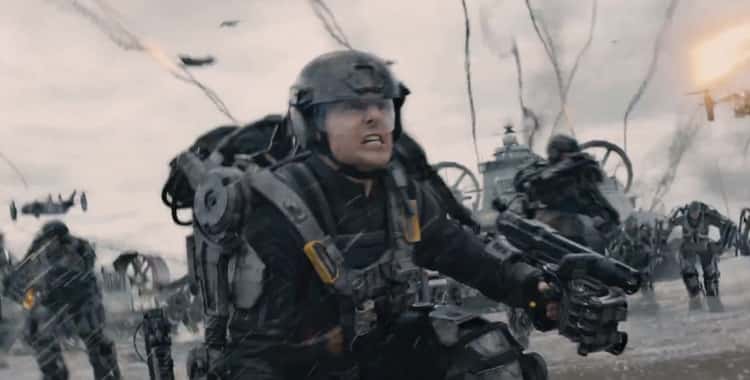
If Groundhog Day were a post-apocalyptic alien war movie, it might look something like Edge of Tomorrow. In this military time loop story, Tom Cruise stars as a member of a military unit locked in a war with aliens, reliving the day that he dies over and over again.
Though Edge of Tomorrow is a sci-fi flick, director Doug Liman wanted to ground the film in a sense of reality, including detailed exosuits that weighed up to 90 pounds. Producer Erwin Stoff gave some context for the suits:
One of the real challenges that we had on this movie was making a science-fiction movie with a director who had no real interest in science-fiction. Doug really only had interest in science-fact. So anything that we ever did as far as the suits went, as far as the weaponry went, as far as any of the technology that was earthbound, it had to have a real basis in reality, in what was technologically possible. So in most instances of movies that use these kinds of exosuits, you usually just do them through CG, through computer-generated technology. We were actually foolish enough to say, ‘no we’re gonna build these suits’.
Liman shared with science communicator Dr. Kiki Sanford the inspiration behind the film’s suits:
We looked at what DARPA [Defense Advanced Research Projects Agency] is currently building and envisioned if we were five years into a war, and everything else just stopped, and the best minds in the world and the manufacturing prowess focused on building these suits of armor, where would we be in five years. […] The level of sophistication that went into designing these suits was unlike anything that I’ve been exposed to in movie-making or in real life, and they’re made up of hundreds of parts that all work together.
8. The Zombie Virus In ’28 Days Later’ Is Based On Existing Ones In The Real World
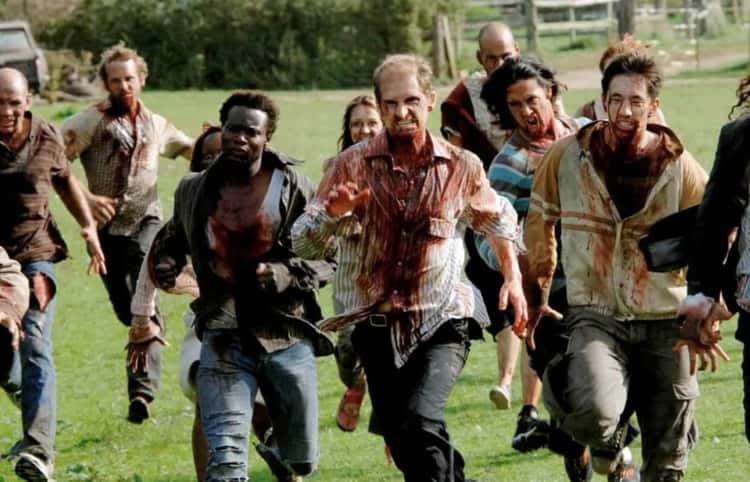
Danny Boyle’s 28 Days Later takes place in the aftermath of a devastating, blood-borne virus that has turned many humans into zombies. Boyle and his team actually found inspiration for the fictional virus in the real world. As Boyle shared:
Obviously, it’s not based on AIDS; it’s more like Ebola. There’s a book called The Hot Zone, by Richard Preston, which we read. It’s about a guy who carried Ebola from Africa to Washington. It’s an airport kind of page-turner, but it’s phenomenal what happens. And the manifestation of the disease in the lm, the sickness, is all based on Ebola with a bit of rabies, so there is a bit of medical background. But you can’t help thinking about it – ever since AIDS appeared, people have had this sensitivity about the smallest drop of blood.
The film’s premise and its inspired-by-real-life virus connected with audiences, since it grossed $82 million worldwide against a budget of $8 million.
9. ‘I Am Legend’ Changed The Setting To NYC Because It Was Easier To Make Look Empty
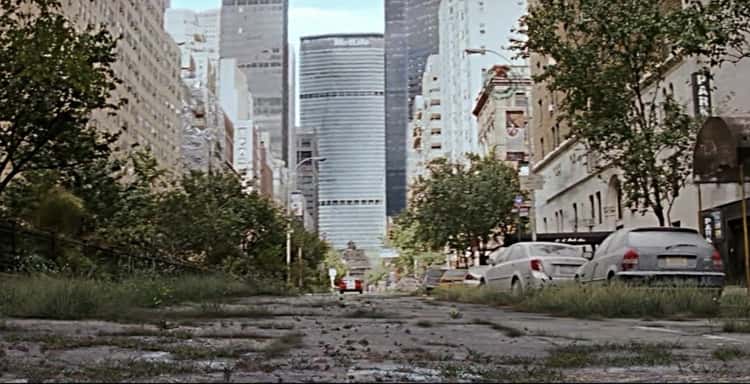
In 2007’s I Am Legend, an adaptation of a Richard Matheson novel, Will Smith plays Robert Neville, a virologist who has survived a viral pandemic that has turned humans into monsters. Accompanied by his loyal dog as he tracks down a cure, Neville is the last human in New York City.
Originally, the film was supposed to take place in Los Angeles, like the novel. However, director Francis Lawrence believed that an empty New York City would be more effective on film than an empty Los Angeles.
Completely shutting down one of the busiest cities in the world was out of the question, so the production team spent $40 million just to make the city feel empty. They employed digital magic to help make the bustling streets appear abandoned. As Lawrence shared with How Stuff Works:
I didn’t want the city to look like a painting. When you shoot on blue screen and green screen all the time and everything is generated, it starts to look a little painterly. […] You just can’t beat actually walking down the center of a New York street with an M-16. It really assists in the psychology of creating the character when you can actually be in the place and not on green screen or in Baltimore [standing in] for New York. […] The movie couldn’t have been more fun or more of a headache at the same time. You have 200 production assistants hiding in doorways and around corners, and traffic cops blocking the street and it’s a zoo, just to get a shot of a guy walking down the street with his dog.
